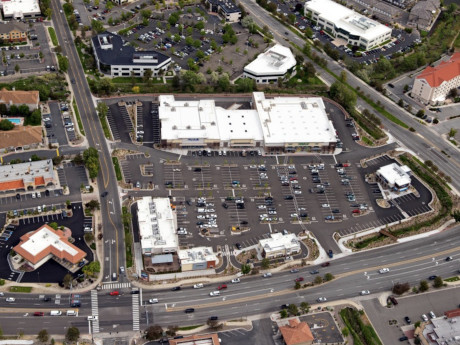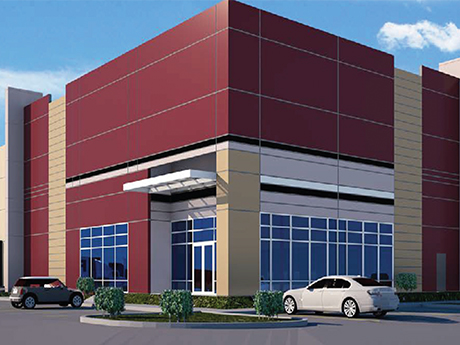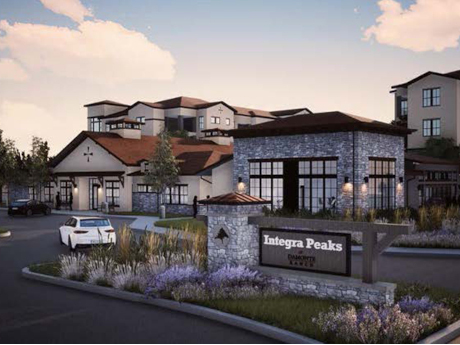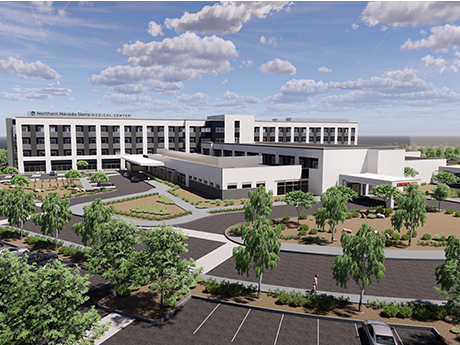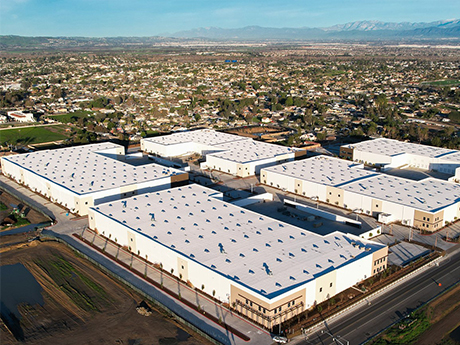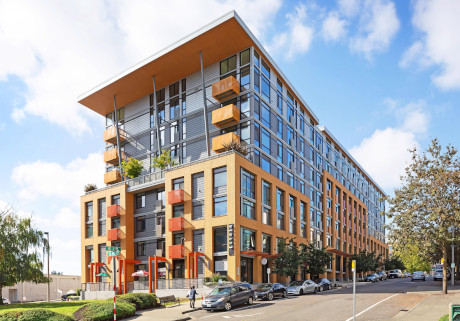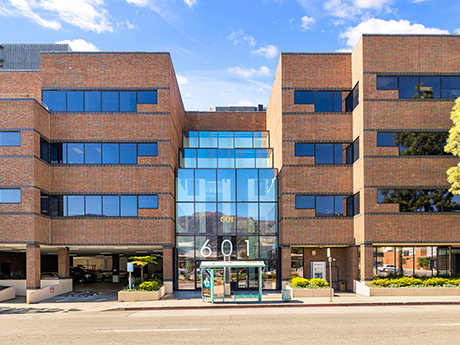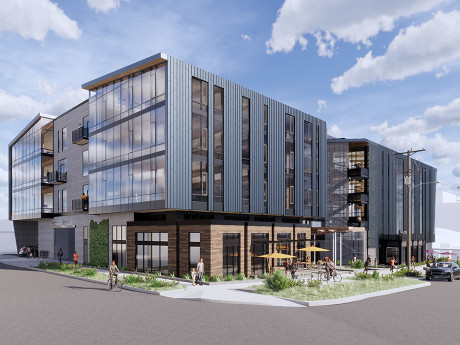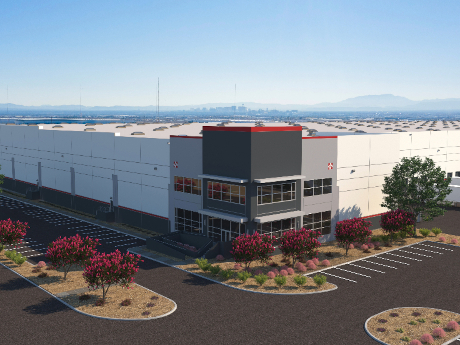— By Tad Loran, Vice President, Retail Specialist, Avison Young | Western Alliance Commercial Inc. — The Northern Nevada retail sector has made quite a comeback post-pandemic as both the population and job market expand. The retail vacancy rate ended last year at 4.7 percent and increased 20 basis points to a current level of 4.9 percent, while market rent increased from $1.70 to $1.83 on a monthly basis for the same period. South Virginia, Meadowood, South Reno and the North Valleys are all recipients of a thriving market. Tenants that have recently entered the region or are expanding in Northern Nevada include Petco, Panera Bread, Colombia Sportswear, Voodoo Brewing Company, the Human Bean, Starbucks, Cracker Barrel, Mountain Mike Pizza, Take 5 Oil Change, AutoZone and Five Below. Tenants with recent closures include Bed Bath & Beyond, Lucky Brand Jeans, Tuesday Morning, Steak ‘n Shake, Sizzler Steakhouse and Claim Jumper. Unemployment in Nevada increased to 4.4 percent in July 2023 from 3.5 percent in December 2022. Even though there was an increase, this continued low unemployment rate has created a challenging labor market with employers lacking the necessary labor pool to grow. Unfortunately, this shortage has led to some prospective new businesses …
Western Market Reports
— By Justin Basie President of Real Estate, Mark IV Capital — While the Reno-Sparks Metropolitan Statistical Area (MSA) is best known for its gaming-tourism industry, its location in Northern Nevada also appeals to fans of the outdoors. In addition, Reno’s diversified economy readily attracts Fortune 500 companies that are targeting the area for their manufacturing and distribution efforts. This, in turn, drives the massive growth of Northern Nevada’s industrial sector, generating overwhelming demand for warehouse, logistics and manufacturing space in the region. The following fundamentals have positioned Northern Nevada and the Reno-Sparks MSA as ideal destinations for logistics, manufacturing and other industrial activities: • Population Proximity The MSA is conveniently located within a one-day trip of major West Coast cities like Los Angeles, San Francisco and Portland, Ore. Thanks to an efficient infrastructure network that includes major highways, two railways and the Reno-Tahoe International Airport, companies can reach a vast 80 percent of the Western U.S. population in less than 24 hours. • Business-Friendly Climate Nevada is consistently ranked as a top 10 state for conducting business because of its pro-business regulatory environment, low-cost start-up fees, and streamlined licensing and approval processes. Nevada also offers a favorable tax environment for …
— By Nick Knecht, Vice President, DCG Industrial — The industrial real estate market in Northern Nevada demonstrated stability over the first three quarters of 2023. Sales performance year to date through the third quarter was steady, with industrial sales volume reaching $116 million. This represents a 42 percent increase compared to the same period in 2022. This should keep the market on track for a decent year, despite falling slightly short of its historical averages. Notably, the shift in buyer dynamics caused by the rise in interest rates, which have soared as high as 8 percent, has investors sticking to a more conservative approach to their underwriting. Owner-users have emerged as the primary drivers of sale activity, and were the buyers of all four closed sales in September. Prices are beginning to soften, and price reductions are occurring more frequently, which is expected to improve buying opportunities for investors over the next 12 to 18 months. Leasing activity has been concentrated in the 10,000- to 50,000-square-foot range, which captured 44 percent of the third quarter’s lease transactions, and similarly 38 percent in the 5,000- to 10,000-square-foot range. Lease rates have remained relatively stable since the first quarter, with Class A …
— By Aiman Noursoultanova, Senior Vice President, CBRE’s Reno Investment Properties Group — Reno’s multifamily sector has performed exceptionally well over the past decade due, in part, to strong, sustained job growth. Nevada continues to lead the nation in employment growth at 3.8 percent over the past year, according to July data from the Bureau of Labor Statistics. While Reno’s job growth over the past decade has focused more on diversification, recent growth can best be characterized by higher-wage industries like healthcare, technology, manufacturing and aerospace/aviation. As a result, the market has seen an influx of new Class A, well-amenitized construction that appeals to this new tenant demographic. Notable company relocations and expansions thus far in 2023 include OMEC Medical, a life sciences instrument manufacturer; Edgecore, a wholesale data center developer, owner and operator; Generac, a leading global designer, manufacturer and provider of energy technology solutions; and Stellar Aviation, a fixed-base private airplane operator catering to private planes and jets. Companies investing in Reno most commonly appreciate the region’s attractive regulatory environment, low cost of doing business, access to regional transportation corridors and a high quality of life for its employees. Regarding rent growth over the past decade, several submarkets have performed …
— By Daniel A. Kapic, Vice President, Regional Manager, Marcus & Millichap — Reno continues to be one of the nation’s fastest-growing smaller markets, underpinning tenant demand in the office sector. While remote and hybrid work have impacted office use in the metro, market-wide vacancies have kept in decent shape. Entering July 2023, Reno’s 15.1 percent vacancy rate was below the pre-2017 average. Rapid household growth has backstopped space needs, with law, financial and health service providers executing expansions to capture share in a growing market. The local household count increased 2.2 percent year over year in September, which was the second fastest among metros with fewer than 600,000 households. South Reno is spearheading this growth with 14 consecutive quarters of positive apartment net absorption through June 2023, drawing consumer-facing office tenants to the highly developed Meadowood neighborhood. The Reno VA Medical Center — which serves patients as far as Alturas, Calif. — recently announced its relocation to the area, which should also elevate long-term needs for nearby medical office space. While household growth has shored up space demand, Reno’s office market is still recalibrating to a 20-year-high supply injection. Overall inventory expanded 2 percent in the first half of …
— By Nellie Day — Jon Pharris, co-founder and president of Newport Beach, Calif.-based CapRock Partners, is in delivery mode. The firm recently debuted Palomino Ranch Business Park and Saddle Ranch South, two new LEED Silver-certified industrial building complexes in Norco, Calif. Palomino Ranch is a three-phased, 2-million-square-foot industrial development, while Saddle Ranch South is a 374,000-square-foot three-building industrial park. Next up is Central Point III, a component of CapRock’s 5-million-square-foot, master-planned Central Point industrial development in Visalia. WREB recently sat down with Pharris to discuss these new projects, the types of tenants/users CapRock is now targeting and why location is more important than ever. WREB: Why was Norco the right choice for both the Saddle Ranch South and Palomino Ranch developments? Pharris: Norco is an important location for logistics and distribution due to its position near the convergence of Riverside, San Bernardino and Orange counties, in addition to its seamless transportation connectivity, robust infrastructure, proximity to major ports and airports, favorable business environment and skilled workforce. These factors collectivelycontribute to the city’s efficiency, cost-effectiveness, and competitiveness for facility operations, attracting businesses seeking to optimize their supply chains and expand their market reach. Norco is highly desired by Orange County, …
Inflated Interest Rates Impact Values, but Tech and Growth Drive Resilience in Metro Seattle
by Jeff Shaw
— By Steven Chattin, Managing Director, Berkadia — Nationwide, inflated interest rates are significantly impacting property values. In the Seattle metro, cap rates are increasing while values decline and bridge debt rates hover at 8 percent or higher — non-starters for many multifamily investors. The common play is to secure favorable short-term financing for if and when rates come back down. Due to these factors, family offices, high-net-worth individuals and private capital groups are the most active players in today’s market. Lenders are also feeling the impact of the economic environment, with the current depth being extremely shallow for competitive options. As transactions slow, some players are scaling back or stepping out of certain arenas entirely. Umpqua Bank recently shuttered its multifamily lending operation on the West Coast. According to second-quarter data provided by CoStar, multifamily sales volume has decreased by 50 percent year over year. Agency debt is most favored right now with fixed rates preferred over floating rate debt. Where available, loan assumptions are generally the most attractive option and have bridged many deals across the finish line. Challenges aside, many developers are staying busy as evidenced by the nearly 12,000 additional units projected within the Seattle-Tacoma metro …
— By Scott Romick — The Western region is going through a lot of changes when it comes to the office market. Downtown San Francisco, in particular, was a large tech hub with so much infrastructure prior to the pandemic, but it’s currently become more of a ghost town. Because hybrid and remote work is common now, many of the workers who are back to the office have moved to local submarkets that offer faster commutes, more efficiency, affordability and other key factors. Southern California, on the other hand, is a growth market. Suburban areas like the San Fernando Valley’s Sherman Oaks — which has become more active than the West Valley — continues to expand its population. This helps the office market as well as existing and new retailers. Even pockets like Encino, Studio City and Burbank have become more populous, attracting a young workforce given their proximity to local restaurants, coffee shops and parks. Unfortunately, Downtown Los Angeles is still struggling to recover as a central business district, Century City is rebounding slowly and Santa Monica is shifting in its downtown area, given the nature of office structures and their footprints. Hybrid & Regionalized Real Estate The hybrid work …
— By Lisa Stewart, Senior Managing Director, JLL; and Nick Menghini, Puget Sound Research Manager, JLL — Real estate market participants are maintaining cautious optimism for improved conditions across the Puget Sound as signs of vitality are emerging despite persistently challenging economic forces. Viewed through the lens of prior real estate cycles, it’s clear the Seattle area has a greater critical mass of highly skilled talent and a broader, more resilient economic base than previous slowdowns. Among the promising indicators are the Puget Sound’s rebound of population in-migration, from net outflows during the pandemic to more than 53,000 new residents moving here in the first half of the year. Seattle now lays claim to being the fastest growing of the top 50 U.S. cities, according to Census data. Several leading employers are also growing again. This includes Boeing, which has more hiring underway than in years’ past. Rising star Blue Origin has had about half as many open positions as Boeing over the past 12 months. The life sciences sector is further expanding as Big Pharma firms like Pfizer, Moderna and Novartis join homegrown startups with significant Puget Sound presences. Overall, companies encouraging a return-to-office (RTO) have brought more daytime foot traffic to employment …
— By Ted Evans — The white hot, logistic-based real estate market in Southern California has cooled off. This is due to a combination of factors, including the end of COVID-based buying. Labor disputes, interest rate hikes and slower absorption rates are pushing business back to normal in a Western market segment supported by strong fundamentals. Returning to Normal As the crazed days of pandemic-induced buying slip into the past, we are seeing vacancy levels returning to pre-pandemic conditions. This may not be what some real estate investors want to hear, but the supply chain is certainly not as constricted as it was two years ago. The days of ordering products that were unavailable for weeks or months are over. The numbers we’re seeing back up our on-the-ground assessments. According to Savills, the warehouse vacancy rate in the logistics-heavy Inland Empire jumped to 3.8 percent in the second quarter. This was compared to 1.2 percent a year earlier, which was largely driven by reduced tenant demand over this period. The national vacancy rate for the sector clocks in at 4.7 percent, proving that the logistic sun is still shining in California. However, the increased vacancy rate is also …


